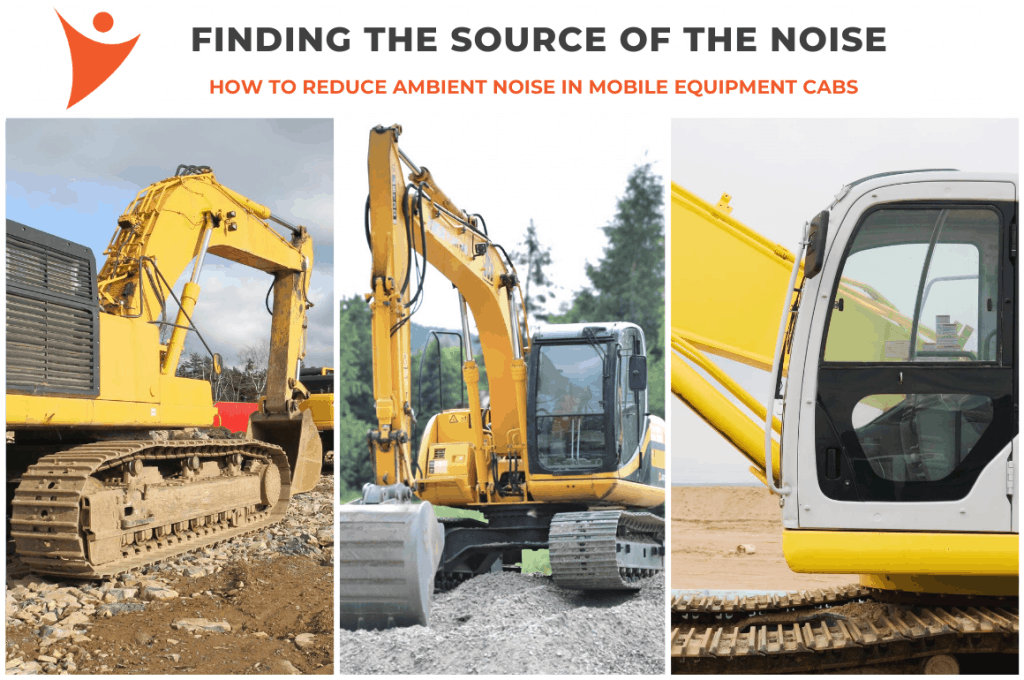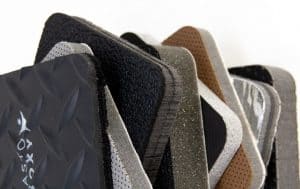A sound blocker is a type of acoustic insulation that blocks sounds instead of absorbing or dampening them. Materials of construction include mass-loaded vinyl (MLV) and closed-cell polyvinyl chloride (PVC) foam. Both of these materials are dense and can be applied to solid surfaces such as ceilings, walls, floors, machinery, and equipment. Sometimes, sound blockers are called noise blockers or noise barriers.
Elasto Proxy makes custom sound blockers and also supplies standard sound-blocking products to manufacturers. This article contains answers to some frequently asked questions (FAQs) about this type of acoustical insulation. Keep reading to learn more, or contact us if needs a standard or custom sound blocker for industrial noise control.
How does a sound blocker work?
Sound energy bends or diffracts when it hits an obstacle. For an analogy, consider what happens if you spray a garden hose on a blacktopped driveway. None of the water penetrates the driveway’s hard, dense surface, and some of the water bounces off in a different direction after making contact with the pavement.
Why is MLV used for noise control?
Regular vinyl is dense, but mass-loaded vinyl (MLV) has added mass because it also contains salt, sand, or metal particles. MLV maintains its flexibility, however, and that’s important when an external force, such as pressing or bending, is applied. This material’s relative thinness also supports effective noise control in tight spaces, such as between pipes or in HVAC systems.
Why is closed-cell PVC used for noise control?
Closed-cell polyvinyl chloride (PVC) foam is dense, but it’s more rigid than MLV. In fact, the term “foam board” is often used to describe this type of PVC material. Another important characteristic is the broad chemical resistance that PVC imparts. As a closed-cell foam, this form of PVC will prevent the flow of liquids and gases to and from the environment.
Do sound blockers ever contain other materials?
Yes. Sound blockers can use facings that support cleaning or that provide a decorative finish. These facings can also use other types of noise control, such as sound absorption. In addition, sound blockers can be used with sound-absorbing acoustical foams or with foams and facings that provide thermal insulation.
What are some types of facings?
Regular vinyl can be used as a facing because it absorbs low frequencies and has a smooth surface that’s easy to clean. Fabrics can also be used to provide a decorative finish. Because some sound barriers need to provide both noise control and thermal insulation, aluminum foil can be used as the facing material.

What’s an example of a sound blocker that’s used with other materials?
FM-500-60-ZM from Elasto Proxy consists of a sound blocker and a sound-absorbing acoustical foam. The top of this product features a durable, wear-resistant, diamond plate design. Applications include floormats and flooring in heavy equipment, and runners and anti-fatigue mats in industrial facilities.
How are sound blockers made?
A sound blocker that’s made of a single material, such as MLV sheeting, is water-jet cut into a specific size and shape. If the sound blocker also uses foams and facings, then all of these materials are laminated together first. After water jet cutting is complete, a pressure-sensitive adhesive (PSA) may be applied.
Where are sound blockers installed?
Sound blockers are installed at the source of the sound, such as the engine bay for diesel-powered equipment. Sometimes, they’re also installed at the receiver, such as the cabin where an operator sits. PSAs support peel-and-stick attachment, but sound blocker installation may also require metal fasteners.
How do you select the right noise blocker for your application?
Each application is different, but this list is a good place to start.
- What is the maximum insulation thickness that your application can support?
- Do you need a sound blocker that’s more rigid, or that’s more flexible?
- What is the source of the sound?
- How close to the source can you install the sound blocker?
- Do you need environmental resistance? If so, what is the environment like?
- Do you need a product that resists washdowns or that has a decorative finish?
- Do you need more than just sound blocking?
Is it possible to get sound blocker samples?
Yes. If you’re a manufacturer, request the Elasto Insulation Bag. It contains samples of sound blockers and other types of acoustic, thermal, and thermal-acoustic insulation. Plus, we can include samples of edge tri, bulb trim, or D-shaped profiles with adhesives if you need them.









